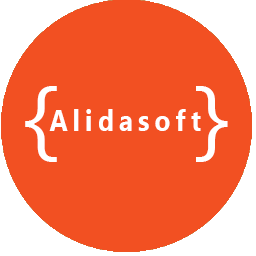Advanced Architecting on AWS
A Deep Dive for Cloud Enthusiasts
Introduction
As you progress in your AWS cloud computing journey, the need for advanced architecting skills becomes paramount. This guide is tailored for prospective AWS cloud computing students, offering an in-depth exploration of advanced architecting concepts, best practices, and practical applications within the AWS ecosystem.
Navigating Advanced Architecting Concepts
Understanding Key Components
Before delving into the intricate details, let’s establish a foundational understanding of advanced architecting:
- Microservices Architecture: Decomposing applications into small, independent services.
- Serverless Architectures: Building applications without managing infrastructure.
Leveraging AWS Elastic Beanstalk for Scalability
Simplifying Deployment and Management
AWS Elastic Beanstalk provides a platform for deploying and managing applications:
- Automated Environment Provisioning: Rapidly deploy applications with ease.
- Auto-Scaling: Dynamically scale resources based on demand.
Designing Resilient Architectures with Amazon CloudWatch
Ensuring High Availability and Reliability
Amazon CloudWatch is an essential tool for monitoring and managing AWS resources:
- Metrics and Logs: Collect, monitor, and analyze logs and metrics.
- Alarms and Actions: Set alarms to respond to changes in your environment.
Implementing High-Performance Architectures with Amazon RDS
Database Management for Advanced Architectures
Amazon RDS (Relational Database Service) is pivotal for high-performance architectures:
- Automated Backups: Ensure data durability with automated backups.
- Read Replicas: Improve read performance with replicas.
Building Scalable and Secure Solutions with AWS Auto Scaling
Adapting to Changing Workloads
AWS Auto Scaling adjusts the number of resources available to your application based on demand:
- Dynamic Scaling: Automatically adjust capacity to maintain steady, predictable performance.
- Scheduled Scaling: Scale your application based on predictable changes.
Advanced Networking with Amazon VPC
Customizing Your Cloud Infrastructure
Amazon VPC allows you to create a logically isolated section of the AWS Cloud:
- Subnets and Route Tables: Design a network structure tailored to your needs.
- VPN and Direct Connect: Extend your on-premises data centers into the cloud.
Optimizing Costs with Advanced Architecting Strategies
Balancing Efficiency and Budget
Advanced architecting also involves optimizing costs while maintaining performance:
- Reserved Instances: Secure capacity at a discounted rate for predictable workloads.
- Spot Instances: Utilize spare EC2 capacity at a lower cost.
Ensuring Security in Advanced Architectures
Prioritizing Security in Complex Environments
Security remains a top priority in advanced architectures:
- IAM Roles and Policies: Manage permissions effectively.
- Encryption: Safeguard sensitive data with robust encryption practices.
Conclusion
Mastering advanced architecting on AWS opens up a realm of possibilities for crafting resilient, high-performance, and cost-effective solutions. From scalable deployments with Elastic Beanstalk to network customization with Amazon VPC and cost optimization strategies, this guide has covered key aspects for aspiring cloud architects.
Summary
- Microservices and Serverless Architectures: Decomposing applications and building without infrastructure management.
- AWS Elastic Beanstalk: Simplifying deployment and management with automated provisioning.
- Amazon CloudWatch: Ensuring high availability and reliability with monitoring and alarms.
- Amazon RDS: Managing databases for high-performance architectures.
- AWS Auto Scaling: Adapting to changing workloads with dynamic scaling.
- Amazon VPC: Customizing cloud infrastructure with isolated network sections.
- Cost Optimization Strategies: Balancing efficiency and budget with reserved and spot instances.
- Security Best Practices: IAM roles, policies, and encryption for secure architectures.

